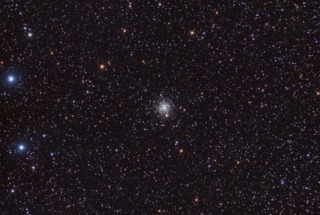
- Constellation: Delphinus
- Right Ascension: 20h 34m 11.37s
- Declination: +07° 24′ 16.1″
- Distance: 51,000 ly
NGC 6934 is a distant globular cluster located in the constellation of Delphinus. It has a Shapely-Sawyer concentration class rank of VIII (8). Eighty-five variables have been discovered in the globular with most of them being of RR Lyrae type.
Some of the variables located in and around NGC 6934.
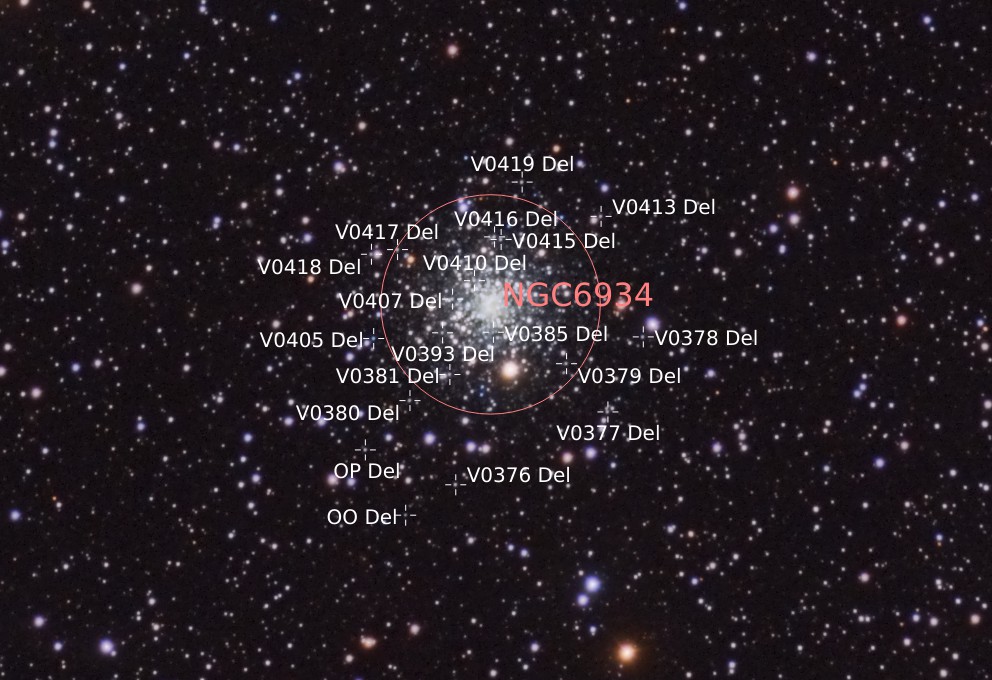
- Details
- Category: Globular Clusters
- Telescope: Explore Scientific 127 Refractor
- Camera: ZWO 2600 MM
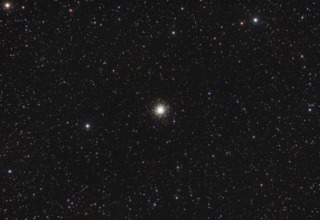
- Constellation: Sagittarius
- Right Ascension: 20h 06m 04.85s
- Declination: −21° 55′ 17.85″
- Distance: 68,000 ly
If globular cluster NGC 5897 (2022) ranks low on the Shapely-Sawyer concentration scale, Messier 75 comes out at the top of it's class with a rank of 1 (I). If it wasn't for being on the other side of the galactic center, it would be much more spectacular to image. The cluster has a radius of 67 light years, and contains some 400,000 stars. Would definitely be a sky full of bright stars if one was located inside the cluster.
- Details
- Category: Globular Clusters
- Telescope: Explore Scientific 127 Refractor
- Camera: ZWO 2600 MM

- Constellation: Libra
- Right Ascension: 15h 17m 24.40s
- Declination: −21° 00′ 36.4″
- Distance: 40,000 ly
NGC 5897 is a globular cluster that is a satellite globular of the Milky Way Galaxy. Forming at or before the formation of our galaxy, they typically range in age of 10-12 billion years old. Age is estimated based on the amount of metal located in the stars, which is considered to be anything other than hydrogen and helium. It's measure of metallicity is measured at -1.9 (Fe/H). NGC 5897 has a low density of stars, and using the Sawyer Concentration class which ranges from 1 to 12 (most to least), it is ranked as a low 11.
- Details
- Category: Globular Clusters
- Telescope: Explore Scientific 127 Refractor
- Camera: ZWO 2600 MM
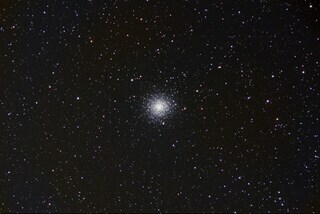
- Constellation: Aquarius
- Right Ascension: 21h 33m 27.02s
- Declination: –00° 49′ 23.7″
- Distance: 37,500 - 55,000 ly
Messier 2 is a globular cluster located in Aquarius. Containing around 150,000 stars. it is also one of the older and largest of the Milky Way globular clusters. Esimated age is 13 billion years and spans 175 light years in diameter.
Was using it as a test object for my new to me camera.
- Details
- Category: Globular Clusters
- Telescope: Explore Scientific 127 Refractor
- Camera: ZWO 2600 MM
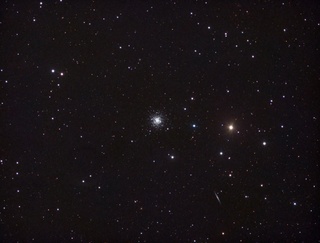
- Constellation: Coma Berenices
- Right Ascension: 12h 10m 06.149s
- Declination: +18° 32′ 31.78″
- Distance: 60,000 ly
A relative small globular cluster possibly due to close encounters with the Milky Way Galaxy. It was possibly a former member of the Sagittarius Dwarf Elliptical Galaxy having been stripped away by the Milky Way Galaxy.
Also of note is the galaxy UGC 7170 in the lower right. It is a super thin galaxy that lacks a central bulge, and the tips of the disks are slightly warped. Super thin galaxies are underdeveloped systems with minimal amounts of interstellar material in them.
- Details
- Category: Globular Clusters
- Telescope: Explore Scientific 127 Refractor
- Camera: ZWO 1600 MM
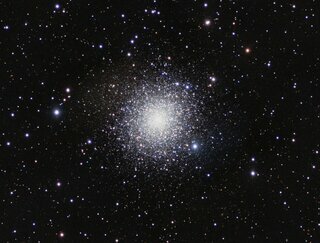
- Constellation: Aquarius
- Right Ascension: 21h 33m 27.02s
- Declination: –00° 49′ 23.7″
- Distance: 55,000 ly
Messier 2, a globular cluster located in Aquarius. One of the largest size wise globular clusters know at 175 light years across. Home to over 150,000 stars. Its age is estimated at 13 billion years, making it one of the older globular clusters.
- Details
- Category: Globular Clusters
- Telescope: Explore Scientific 127 Refractor
- Camera: ZWO 1600 MM